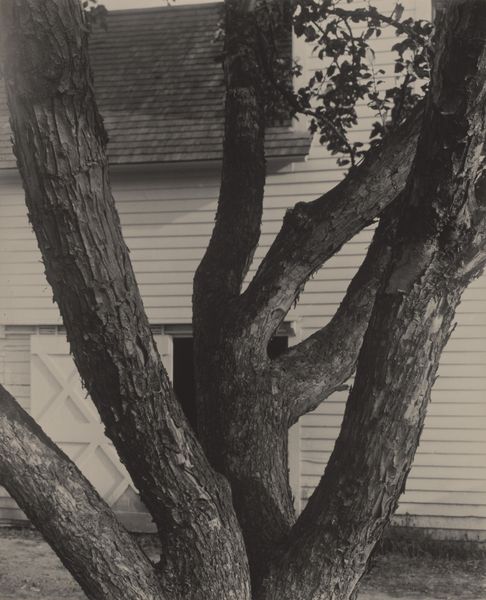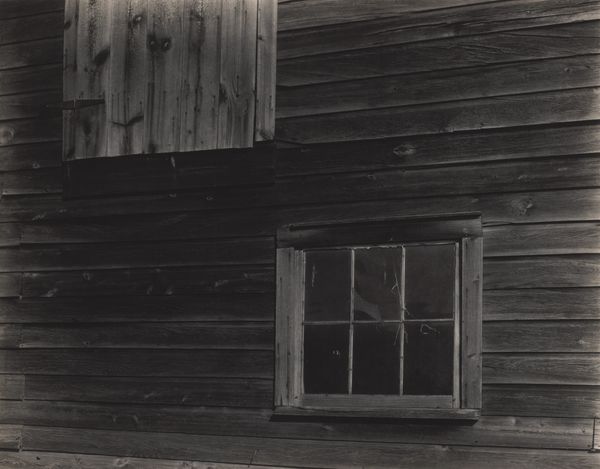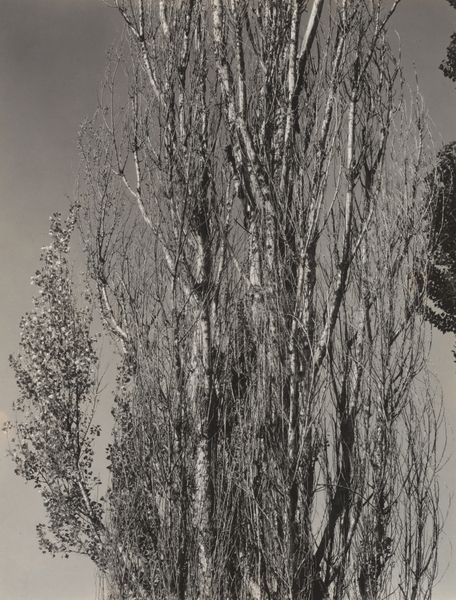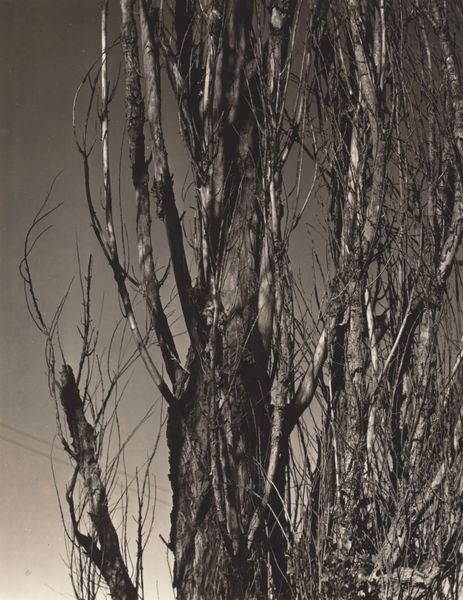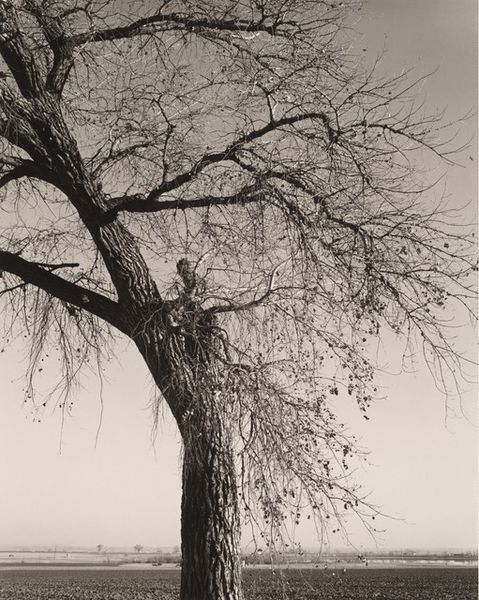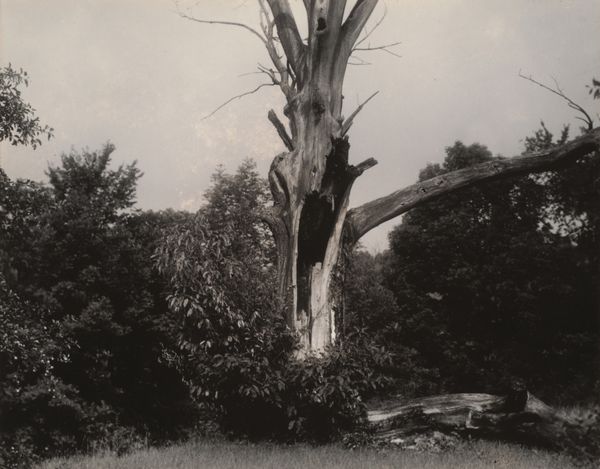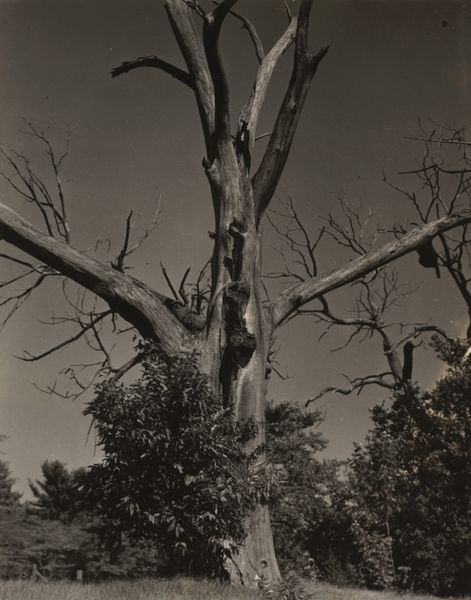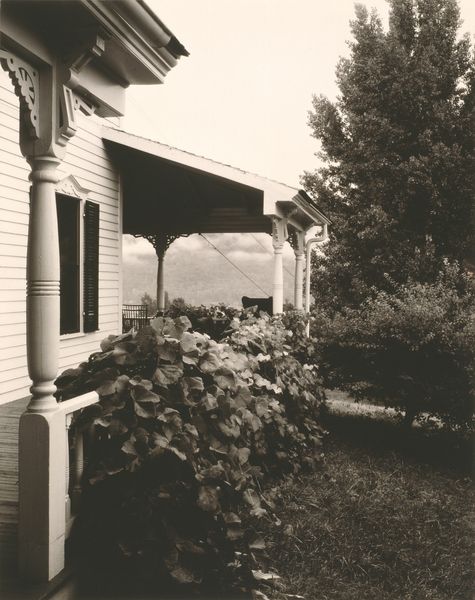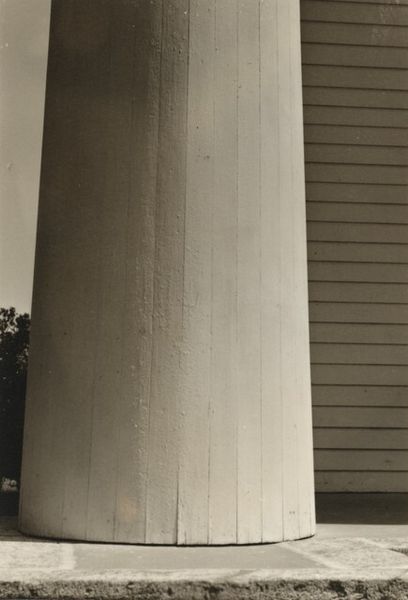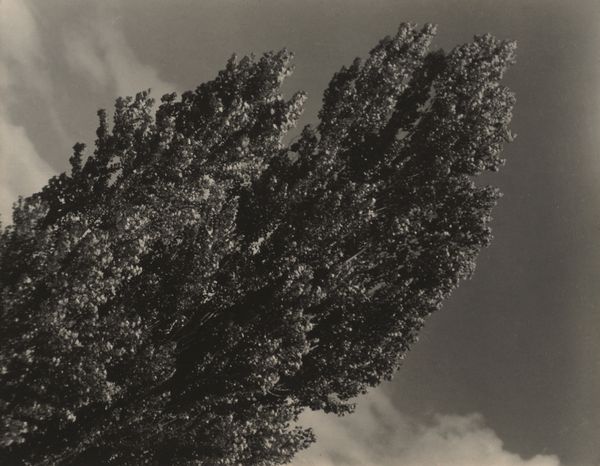
photography, gelatin-silver-print
#
black and white photography
#
pictorialism
#
landscape
#
black and white format
#
photography
#
geometric
#
gelatin-silver-print
#
monochrome photography
#
monochrome
#
modernism
#
realism
#
monochrome
Dimensions: image (visible): 22.9 × 19 cm (9 × 7 1/2 in.) mount: 56.5 × 46.6 cm (22 1/4 × 18 3/8 in.)
Copyright: National Gallery of Art: CC0 1.0
Curator: Well, this print is Alfred Stieglitz’s “Apple Tree,” taken in 1921. He made it using a gelatin silver process. Editor: It feels stark, doesn’t it? And somehow, despite the lack of color, also incredibly tactile. I just want to run my hand over that rough bark. Curator: That texture is crucial to how Stieglitz achieved such depth. He used a large format camera to capture extraordinary detail—every line, every imperfection on the tree's surface. But more than that, there’s this almost... yearning. Editor: Yearning? It looks more like resistance to me, doesn’t yearn. I see this knotty, aging tree juxtaposed against a stark, almost sterile white wall of what I’m assuming is someone's home. A house. You could argue it’s commenting on the forced domestication of nature. Or, more likely for the period, reflecting an anxiety about a quickly modernizing world. Curator: That's a very interesting perspective! For me it resonates with something I read about the tree being near his summer home where his then wife Georgia O'Keeffe also resided. This photo seems to show his love of something living and naturally chaotic like the tree with all of its strange bends and branches that spread, placed very carefully near his residence for safe keeping and love. That can be read as yearning, to me at least. Editor: Maybe. Or consider it this way: Stieglitz often photographed O’Keeffe, framing her within the context of nature and his artistic vision. Is the tree here standing in as a symbol of female fertility or even constraint, seen through his own male gaze? We have to remember the gender dynamics at play in this period. Curator: Oh, I like that tension! Regardless of what meanings it may or may not convey, one can at least find solace in Stieglitz's dedication to the gelatin-silver print method. One might argue it created almost tangible realism, one you feel that would be lost with modern techniques of printing. Editor: Yes, I'll concede this print is not at all devoid of tenderness in its own visual language. Stieglitz definitely makes you feel this ancient being, but the more pressing issues for our contemporary society are, undoubtedly, not in the print, but in what the artist chooses to illuminate—and obscure.
Comments
No comments
Be the first to comment and join the conversation on the ultimate creative platform.
